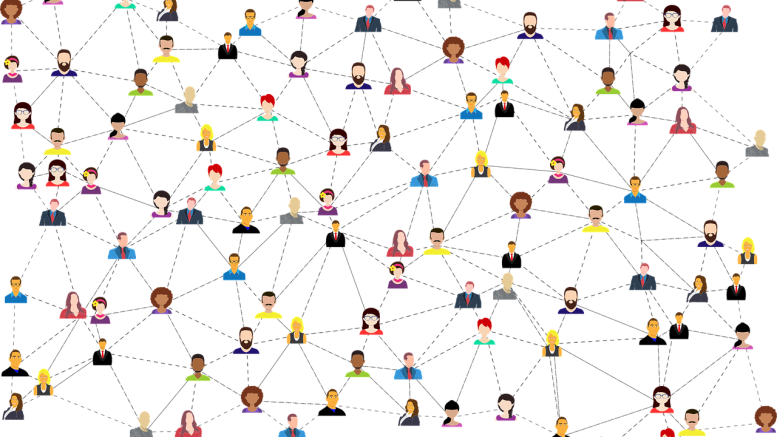Leveraging Technology to Bridge the Gap between Patients and Pharma
Patient populations for individual rare diseases are usually small and spread out across many geographies and, unlike more common ailments, information on rare diseases is either not comprehensive or not available at all. This means people living with rare diseases will struggle to find information on their health (or that of their loved one) resulting in feelings of isolation, loneliness, and often desperation.
It’s no surprise that as the popularity, and access to mHealth technology has grown over the past decade, many organisations, including healthtech companies, pharma companies, and patient associations, have developed mHealth solutions for rare diseases. These solutions often leverage wearables, symptom trackers, and adherence tools with the goal of capturing valuable information that could influence the development of future treatments for specific rare conditions.
Rare disease mHealth apps are often developed by, or in consultation with, patient associations and therefore are targeted towards a specific condition, or sub-sets of conditions. They also typically focus on capturing data directly from patients to help track symptoms, and progress. But what if these solutions took a different approach, providing wider-reaching support for patients and caregivers to address everyday questions and challenges that arise as part of life with a rare disease? Such a solution would enable patients and their families to create connections across conditions and learn from common experiences, even though they may be impacted by different rare diseases.
Expanding connections
By creating a place where patients can both navigate their health journey and share experiences with others, mHealth can provide valuable support and help alleviate the sense of isolation.
There is often very little information available on rare diseases, so at each step in their journey patients and caregivers must search high and low for information on diagnosis, managing symptoms and flare-ups, potential treatments, or simply finding practical advice on how to manage everyday life. Patients report that they often have to educate themselves to read medical papers in order to find the latest information on research. They become experts in their condition, often knowing more about their disease than their doctors as they continually search for information.
The logical step is to leverage technology to bring those affected by rare diseases together so they can seek out others with the same diagnosis, access information, and share knowledge. What may not be obvious is the importance of creating connections between conditions as well as within them. This is because many experiences are not isolated to specific conditions but rather shared across multiple indications; preparing to send a child with a rare disease to school, communicating with physicians who may not be familiar with the disease, or managing symptoms and pain in college or at work.
Such an mHealth platform goes beyond the typical social network. It provides the opportunity for social connection, feedback, and motivation, but – and here’s the critical part – also uses machine learning and behavioural science to identify and analyse commonalities in responses to targeted questions and other aspects of the patient experience. All resulting in relevant and timely resources and content. By breaking down the barriers between conditions it is possible to do this for the 7,000+ known rare diseases.
Bridging patients and pharma
Creating a community to bring rare disease patients together and share experiences presents an opportunity for pharma to engage with patients at every stage of drug development. Typically, pharma only collects data based on specific study objectives and goals, but there is a missed opportunity to widen the spectrum and see the complete picture of real-world experiences, not just a clinical outcome.
With the continuing drive to become more patient-centric, the opportunity to catalogue and learn from real-life experience allows pharma to unlock new insights outside the constraints of clinical research. It can inform them of what they need to focus on to further drive patient engagement and provide the opportunity to build that relationship based on what people with rare diseases really want.
For example, considering the impact of drug administration, side effects, and the potential disruption to a patient or caregiver’s life. Many rare disease treatments are complicated or intrusive, requiring preparation, and impacting quality of life. Medically these treatments address the complications associated with a rare disease, but they don’t consider the impact and experience of taking medicine regularly and the disruption and distress this may cause.
Moving on to clinical research, participation in trials is often the only hope of improved treatment for the rare disease community. Providing the opportunity to learn more about medical research and find out about relevant study opportunities is of high importance to patients and caregivers, whilst trial recruitment is a major challenge for pharma. Therefore, by building a detailed profile of community members (with their consent), specific populations and regions can be targeted to match patients to clinical research opportunities.
Developing a true relationship with patients has historically been very difficult for pharma. However, by creating a community to bring together all those affected by rare diseases and help them navigate each stage of their health journey, pharma can build a new kind of relationship with patients. A relationship based on two-way dialogue, uncovering new insights from real, lived experiences so that a deeper understanding of the realities of life with a rare disease can be developed. Additionally, by enabling the community to express interest in research, in-depth profiles can be created to match patients to research – improving opportunities for patients and ultimately accelerating the development of better treatments.
Article by Jeremy Edwards, CEO, Xperiome

For nearly 25 years, Jeremy has been focused on aiding the biopharmaceutical and health sciences industry in the development of key compounds and new therapies. He has been instrumental in introducing small, European-based eClinical organizations to the US Market, creating new verticals, growing operations, and increasing revenue. His diverse background includes executive leadership positions across the clinical development continuum; from full-service CROs, to highly specialized imaging modalities, to niche patient-focused service providers. By stretching the way we think about study conduct, both pre and post-approval, and driven by innovative technologies, Jeremy focuses on helping people succeed by addressing unmet needs, in an unconventional, innovative way.





